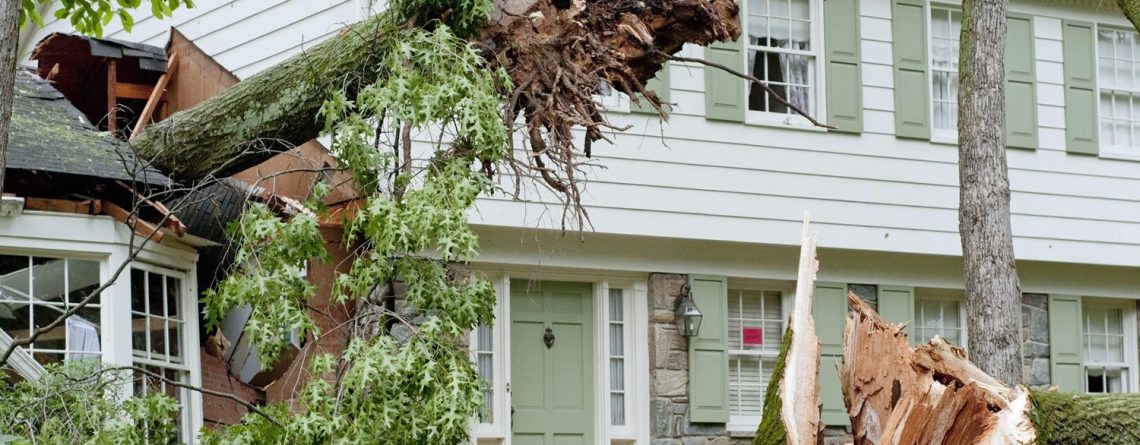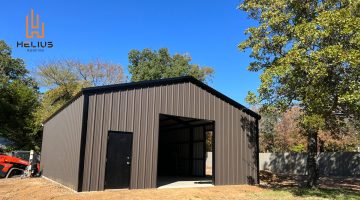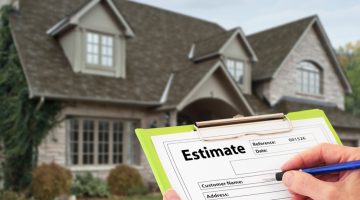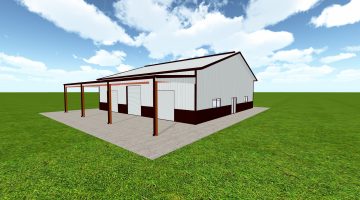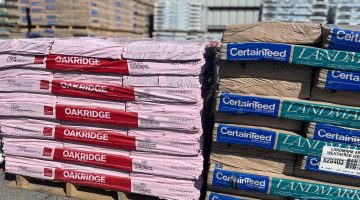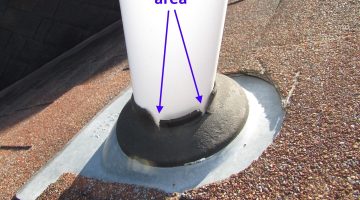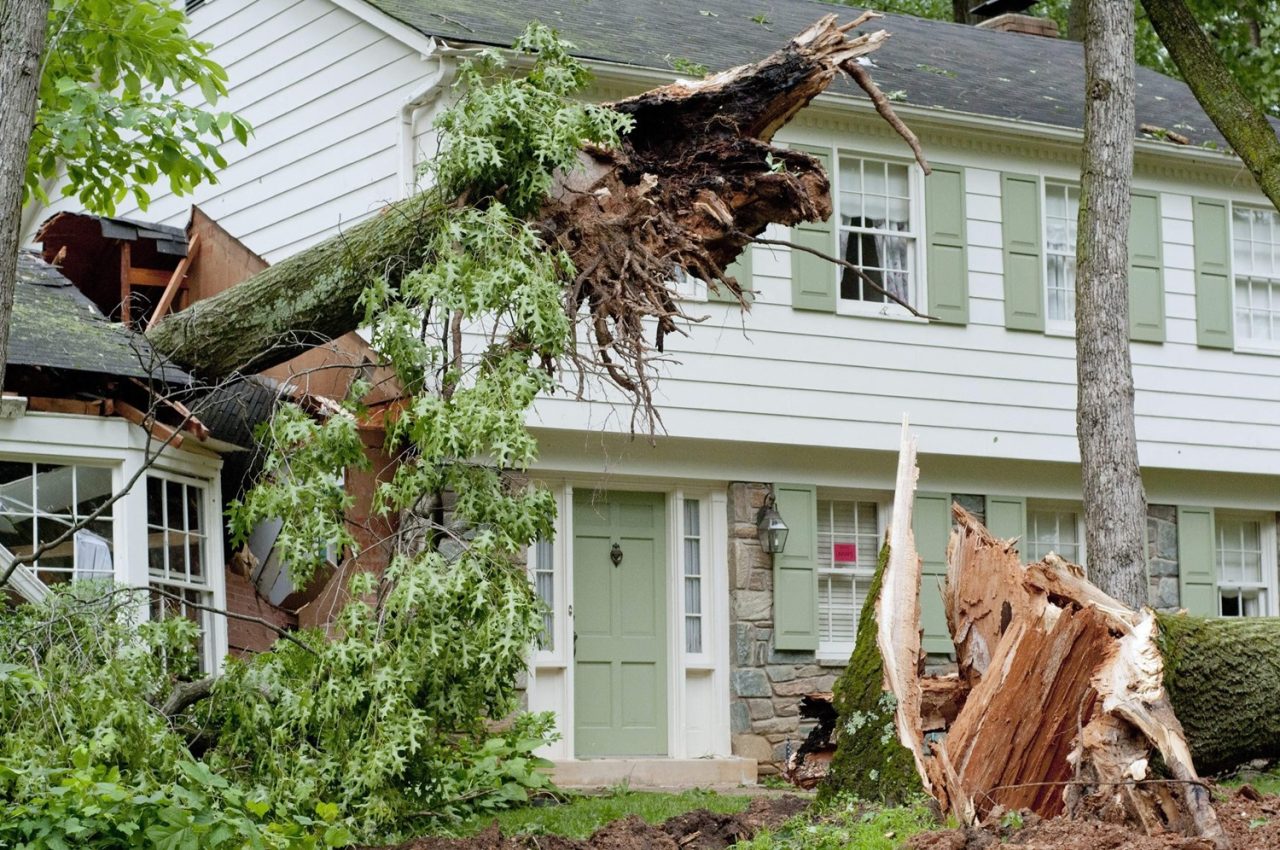
Although your roof is constructed to withstand harsh weather conditions, there’s no guarantee that your home won’t get damaged during a storm. After a severe storm hits, it’s crucial to inspect your roof for signs of storm damage and take swift action to remedy any issues. This guide will talk about the most common kinds of roof storm damage and what you can do next to ensure you don’t incur any additional damage down the line. Let’s dive in! Types of Roof Damage (+ What to Look For After a Storm) ?? First, we’ll discuss in-depth the four different types of roof storm damage (and the most common signs of each), including: Hail damage ? Wind damage ? Water damage ⛈ Debris damage ? As a homeowner, it’s essential to know the early signs of storm damage to protect your home and avoid further damage in the future. However, this can be challenging for the untrained eye. Here’s what to look for: 1) Hail Damage If you live in certain areas of the country, you might be all too familiar with hail damage, which can wreak havoc on your roof. Examples of how a hail event can affect your home include: signs of storm damage hail Cracked, Dented, or Missing Shingles The most obvious sign of hail damage is going to be shingle damage. That could look like small cracks or dents in the round shape of a ball of hail at the point of impact, or whole shingles could slough off during a hail storm. Ice Dams Poorly maintained roofs are prone to issues with ice dams, which form when melting ice and snow are unable to move off the roof and away from your home. This can lead to broken gutters, roof leaks, and dangerous conditions around your home. Holes & Leaks With enough force and surface area, golf ball-sized hail can create holes in your roof, resulting in even more leaks. Look in your attic for any pooling water or light shining through, which indicates a hole or leak. Broken Gutters Hard-hitting hail can also impact your gutters and downspouts, clogging them up or causing them to fall off completely. 2) Wind Damage signs of storm damage wind Although many roofing systems are rated for wind speeds upwards of 120 mph, you may still see some problems with your roof due to wind damage, such as: Lifted or Blown-off Shingles As you may have guessed, high winds can significantly impact the integrity of your shingles. Check on your asphalt shingles after a storm to ensure they haven’t lifted or blown off your roof entirely. Loose Debris In windy weather, loose debris or even patio furniture can blow across your property and cause further damage to your roof. Secure these items properly when you see wind in the weather forecast to avoid holes or punctures. Shingle Granule Loss or Discoloration Wind can also cause granule loss on asphalt shingles. Keep an eye out for shingle discoloration or excessive granule deposits in your gutters as an indicator of wind damage. Damaged Gutters & Downspouts Of course, strong winds can severely damage your gutter system and downspouts, ripping them from your roof edge or clogging them up with loose debris. Gaps in Roofing Material Wind may also lift or tear off your roofing materials altogether, creating gaps in your roof, which will lead to more leaks. 3) Water Damage signs of storm damage water One of the worst types of storm damage is water damage, which can impact both your home’s exterior and interior. After heavy rain, keep an eye out for common signs of water damage on your roof and inside your home, including: Pooling Water Probably the most obvious sign of water damage, make sure to look for any pooling water after heavy rain storms. You might find lingering water pools on your roof surface as well as in your attic, so always inspect both areas thoroughly. Lingering Moisture In addition, it’s important to make sure there’s no lingering moisture penetration under your shingles or inside your home. This can indicate an issue with your shingle seal and cause stains, mold, or other structural damage. Water Leaks Of course, it’s crucial to ensure there aren’t any apparent water leaks on your roof or in your attic. But how can you spot leaks once the rain stops? It’s easy; You can create a “rain simulation” using your water hose to check for leaking water in your attic after storms. Stains, Soft Spots, & Rot Water infiltration often leads to unsightly issues inside your home too. Look out for stains or soft spots on your walls, floors, or ceilings, which may leave you susceptible to rot. Mold or Mildew Growth When left undealt with, water damage can cause dangerous mold and mildew to grow. When inhaled, mold can cause a plethora of health problems, so it’s important to seek help from a professional roofing contractor to remedy this issue immediately and protect your family. 4) Falling Debris signs of storm damage debris Lastly, you want to look out for any structural problems or punctures in your roof from falling objects and blowing debris. These are typically more obvious signs of damage on your roof than the others listed above. Strong winds can send flying debris straight toward your home, causing significant damage, such as: Shattered windows and torn-off siding Punctures in siding and roofing from tree limbs and other debris Large trees and branches on the ground or roof surface Blown-down fences and overturned patio furniture Broken appliances and exterior home features Other visible damage to your home’s exterior Find additional information about the impacts of storms on residential roofing in our other helpful guide here. Taking the Next Steps to Get the Help You Need ?? Whether you only see a few missing shingles or your entire roof’s structural integrity is affected, it’s important to act fast to fix storm damage and avoid potential damage down the line. So, what can you do as a homeowner to ensure your roof remains intact after a storm? The following are a few simple steps you can take to protect your roof and make repairs: Assess the damage on your roof – Look at your roof from the ground or get on a ladder to see the extent of your storm damage. Document the extent of your roof damage – Use a smartphone or digital camera to carefully document all damaged areas of your roof for your insurance claim. Make the necessary temporary repairs – You might not be able to get immediate emergency repair services, so it’s important to find temporary solutions in the meantime. Tarp over any missing shingles or holes and secure damaged gutters or siding until someone can come to provide a more permanent fix. Contact your insurance company – With all of your documentation in hand, contact your insurance provider to start the process of filing an insurance claim for roof storm damage. Some kinds of damage aren’t covered, so it’s crucial to review your policy before submitting your claim. Choose a professional roofing contractor – Do your research online or ask around with friends and neighbors to find a professional roofing contractor in your area who can complete your storm repairs quickly and with lasting quality. Have your roof inspected – Once you choose a roofing company to tackle your storm damage, have them come out to inspect your roof and determine the work needed (and the cost to do it). Get multiple quotes – You don’t want to accept the first bid you get from a roofing company. Compare quotes from multiple roofers before deciding who will do the job best. Meet with an insurance adjuster – In addition to a private inspection, you’ll also need to have your roof inspected by an insurance adjuster before any work can be done. Schedule this with your insurance company as quickly as possible, as most claims must be filed within a specific timeframe. Determine coverage – After an adjuster assesses your storm damage, they’ll determine what’s covered under your policy and how much they’ll pay out for your repairs. Schedule your roof storm damage repair – Now that you know how much of your roof repair costs your insurance is willing to cover, you can schedule storm damage repairs with your chosen roofing contractor. Hire a Reputable Storm Damage Repair Crew You Can Trust ??? Was the structural integrity of your home’s roof affected by severe weather recently? Whether high winds, flying debris, or hail damage are behind your roofing issues, you’re not alone. When you notice the signs of storm damage on your home, schedule a roof inspection with a roofing company you can trust.

